US ambassador Max Baucus: ‘We can’t let the Chinese bully us’
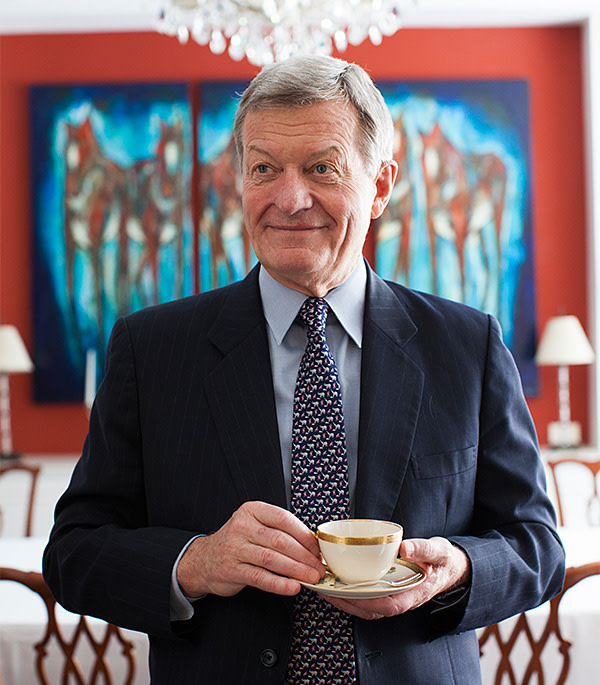
Simply sign up to the Life & Arts myFT Digest -- delivered directly to your inbox.
Before heading to the US ambassador’s residence on another foul-air day in Beijing, I check a website that monitors pollution in the Chinese capital. The PM2.5 count is threatening to break into the “very unhealthy” 200s. The reading indicates that in any given cubic metre of air in the Chinese capital, there are 200 micrograms of particulate matter small enough to embed deep in your lungs and — although the science is not definitive on this — hasten your demise.
The World Health Organisation’s daily PM2.5 standard is, by contrast, 25. I then do a quick Google search for the PM2.5 level in the ambassador’s home town of Helena, Montana. Max Baucus, a former US senator, was looking forward to returning full-time to Montana when Barack Obama asked him to move to Beijing.
The PM2.5 count in Helena is 8, which raises an obvious question: why on earth did the ambassador and his wife, Melodee Hanes, trade in Big Sky Montana for No Sky Beijing?
“We honestly thought we were going to go home when Max announced his retirement [in April 2013],” Hanes tells me a short while later as she and her husband give the FT an hour-long tour of their home. Ten months later, the senator’s appointment to Beijing was confirmed by the Senate. “We even had plans to build a house,” she says. “We had to call up [the builders] and tell them, ‘We gotta stop’.”
“When Max was offered this position, one of the things he said was: ‘Mel, this is not Paris and it’s not gonna be London’,” Hanes adds.
“It’s not Rome,” interjects Baucus. “But we like to camp out in Montana in summer so Mel had a great response: ‘We’ll just pretend like we’re camping.’”
Baucus and Hanes do not live in a tent in Beijing. But as ambassadorial residences go, theirs is not a glamorous one. A few blocks away in Beijing’s Jianguomen Wai area, near the second ring road that sadly replaced the old city walls, the British and Indian ambassadors reside in stately homes with large, well-tended grounds that wouldn’t look out of place on Downton Abbey.
From its outside appearance, by contrast, the US residence could easily double as a safe house in the next movie adaptation of one of John Le Carre’s cold war spy novels.
It is grey and heavily fortified with a perimeter fence, a second inner wall, barbed wire and vehicle barricades. Half a dozen People’s Armed Police officers, with bayonet-tipped rifles, sit in an armoured van parked outside the main gate, ready to swarm out at the first sign of trouble. And in the event that any terrorists, Chinese dissidents or North Korean refugees did get past the PAP’s finest and make it over the first perimeter fence, they would then have to contend with one of the PAP’s mean-tempered German shepherds.
It is all a rather grim reminder that the Sino-US relationship is the most consequential one in the world. At any given moment a Chinese jet fighter could be harassing a US Navy spy plane over the South China Sea at a distance of 15 metres or less. In the event of an accident it might not take long for a nationalist mob to form outside the US ambassador’s gates.
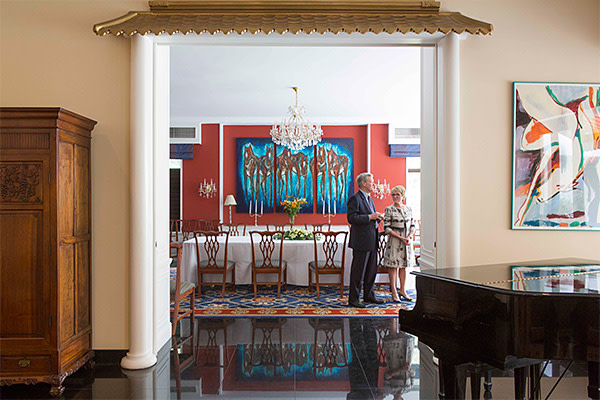
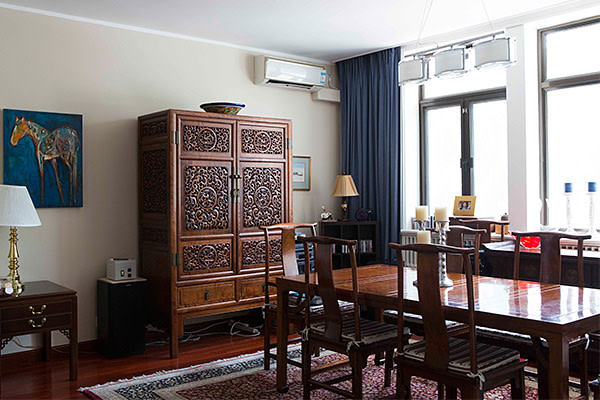
It has happened before. When a US stealth bomber accidentally bombed China’s embassy in Belgrade during the 1999 Kosovo conflict, student protesters massed outside the old US embassy in Beijing, a few blocks away from the ambassador’s residence.
Within 24 hours the compound was being pelted with paint bombs, bottles and rocks as US diplomats huddled inside, sustained on pizza, beer and other supplies handed over a back wall by their Irish embassy neighbours. That episode was one of the reasons the US embassy has since decamped to a much more secure location beyond Beijing’s third ring road.
“I say to the Chinese over and over, OK, your defence spending [is increasing] 10 to 12 per cent a year,” Baucus says. “What are we to think? What are your intentions and more than that, you can’t just tell us what your intentions are. You gotta show by deeds. Show that you want to work with us, otherwise there’s going to be a collision . . . I think the South China Sea is a good example.”
Favourite thing
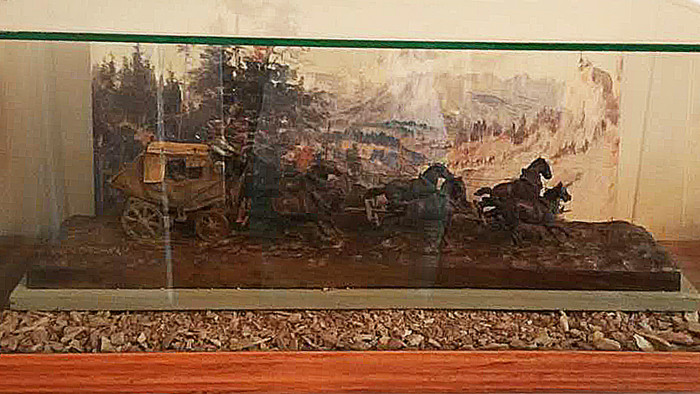
Baucus’s favourite object is encased in a glass box on a side table near the entrance to the residence. It is a sculpture of a horse-drawn stagecoach by the “cowboy artist”, Charles Marion Russell (1864-1926), whose life and career spanned the final years of US westward expansion.
It belonged originally to the ambassador’s late mother, Jean Baucus, who was an avid collector of western art. For years her son kept it in the conference room of his Senate office. “This was one of her prize pieces,” Hanes says. “We just had to bring that little piece of home with us.”
After a 40-year career in electoral politics, representing Montana first in the House of Representatives and later in the Senate, Baucus doesn’t have much time for diplomatic niceties and says he regularly interrupts exchanges of official “talking points” in an attempt to cut to the chase. “I speak to [Chinese government officials] very candidly. Maybe it’s because I’m a westerner,” he says. “We have to exercise self-respect. We can’t let them bully us.”
This sense of excitement — of living where history is happening — seems to be the main reason Baucus, and indeed many others, have chosen to reside in what on some days can be one of the world’s most unlivable major cities.
The lure of the larger world was there when the future senator was growing up on his family’s ranch. “I just like to have one foot in Montana and one foot out,” he says. “I love Montana. I can remember just being there on the ranch, by myself, fixing fences and dreaming how wonderful this place is but there’s more [and I] gotta get out, do both.”
Fortunately for Baucus, Hanes and their many guests — the couple entertain visitors four or five times a week — the long rectangular residence is much nicer on the inside than it appears from the outside. The building faces south with the main door set to the left of the building as one approaches.
Guests are greeted by one of the couple’s favourite objects. “Isabelle”, a life-size horse sculpture by Montana artist Deborah Butterfield, stands below a circular staircase leading to Baucus and Hanes’ private apartment. “Isabelle” is made of pieces of driftwood but, because these have been cast in bronze, weighs 3,000lb. She was transported to Beijing, in one piece, as part of the US government’s Art in Embassies Program, which helps display the work of US artists in diplomatic missions around the world.
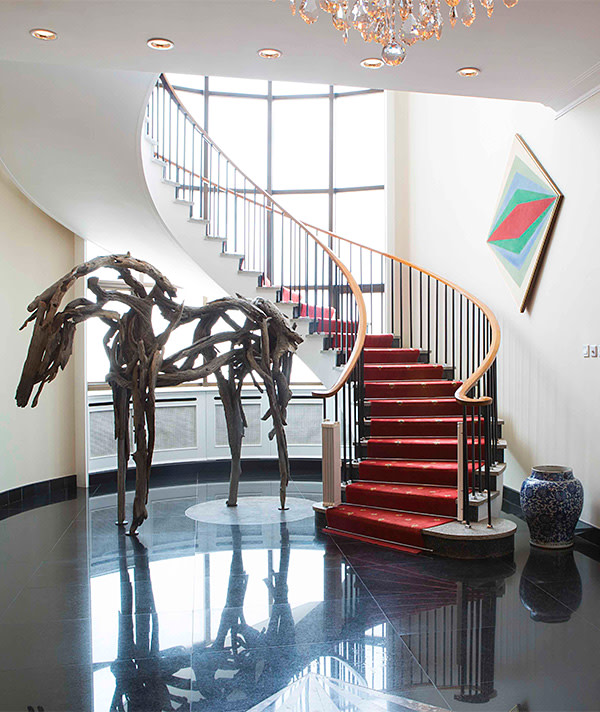
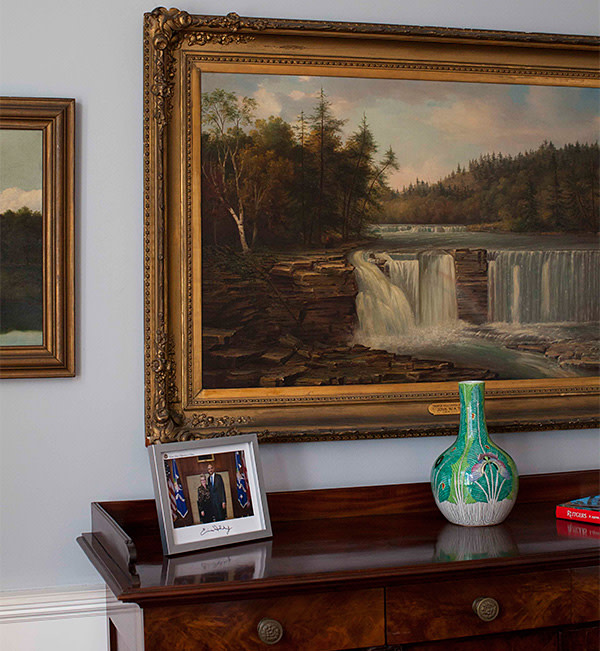
Obama asked Baucus to be his man in Beijing in the Chinese Year of the Horse. That gave him and Hanes the inspiration for one of their main decorative motifs, which helpfully meshes with the ambassador’s Montana ranching roots.
At the far eastern end of the ground floor, which comprises the residence’s public area and can host up to 125 people for formal dinners, is the dining room. There “Welcoming Committee”, a triptych painting of six horses by another Montana artist, Carol Spielman, has gazed down on guests including Henry Kissinger, Bill Gates and Lu Wei, who was until recently China’s chief internet censor.
In between “Isabelle” and “Welcoming Committee” is what Hanes calls “our non-horse” painting — “The Spirit of the Bison” by Harry Koyama, a Japanese-American rancher and artist — and the requisite collection of political photographs, which begins with a kind of shrine to Mike Mansfield. The late Montana senator was Baucus’ mentor and political idol.
We walk upstairs to the modest private apartment the couple share with two cats, Bei Bei and Jing Jing, given to them by the dissident artist Ai Weiwei.
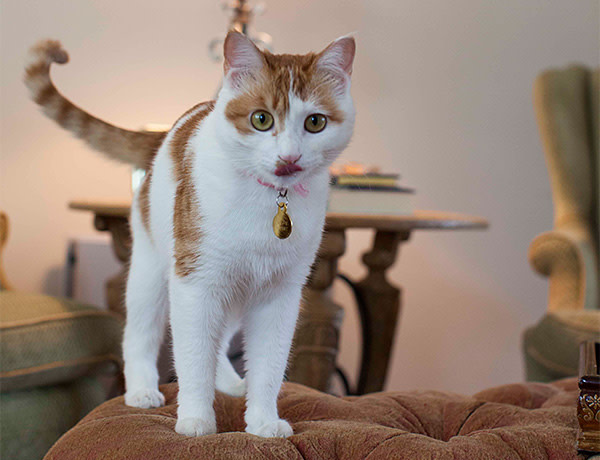
The upstairs theme is more Montana but less equestrian. Baucus is particularly fond of a painting of a squall moving through the Gallatin Valley.
As I take my leave, I ask if there is a chance he will stay on in his post next year after Obama’s second term ends. Baucus simply replies that he serves at the pleasure of the president, whoever she or he turns out to be. “We’ll see,” he adds. “Life has many twists and turns.” He and Hanes are, however, restarting work on their long-delayed new home in Bozeman, Montana. Ground was broken at the end of June.
Tom Mitchell is the FT’s Beijing bureau chief
Photographs: Jasper James
Comments